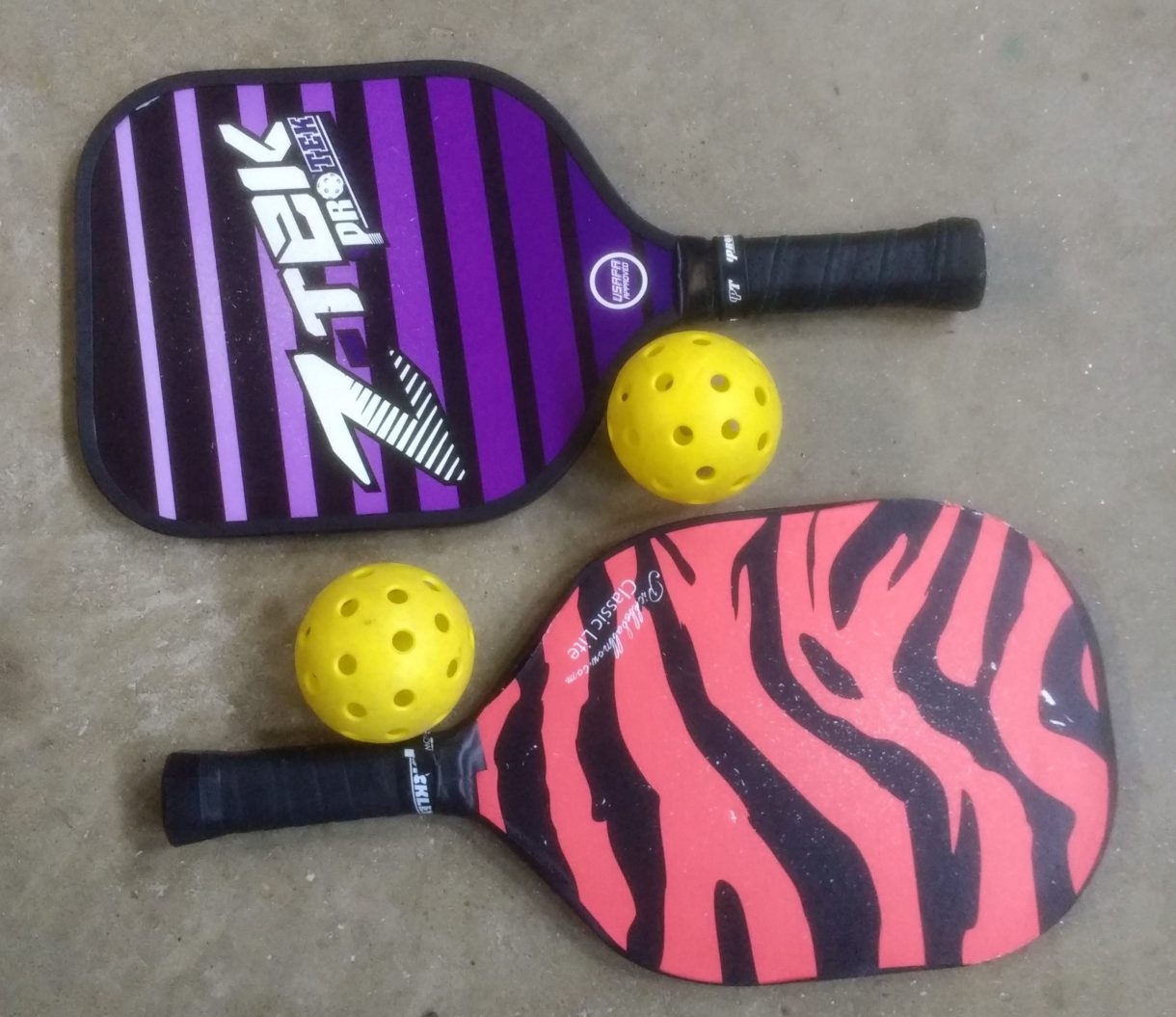
Imagine putting tennis, ping-pong and badminton into a blender. After a quick puree, the concoction that you pour out might taste like pickleball.
If you spend time at your local YMCA or community rec center, chances are you’ve seen pickleball in action. You may have also seen it being played at your local park, either on dedicated courts or tennis courts adapted with chalked or taped lines. Either way, pickleball is having its moment in the sun (or the gym). Here’s all the need-to-know basics on equipment, rules, finding courts and what makes it so fun for all ages.
Basic equipment
Pickleball paddles are made out of wood, composite or graphite. Like tennis rackets, cost varies depending on how much you want to spend and what quality of paddle you want to get. Pickleballs are much like the wiffle balls of childhood – hard plastic, with holes, in a variety of colors. The hardness of the ball can vary for indoor and outdoor play, recreation or tournament. Equipment can be bought at sporting goods stores or online outlets.
Rules
Without getting too in-depth, here are the basics. Pickleball is played indoors and outdoors, usually as doubles. Standard court size is the same as badminton, 20 feet wide by 44 feet long. Net height is 36 inches at the poles, 34 inches in the center (slightly lower than tennis). Tennis courts can be adapted for pickleball use, keeping in mind that the net height is different.
Points are only scored by the serving team, and serves must be underhand. Both players serve each round for each team, with the game’s opening serve an exception (like a tiebreak in tennis). As long as the serving team scores, the same player serves. When the opposing team wins the rally, the second player then serves. The next rally the opponents win, service passes to the other team. To win a game, a team must score 11 points and win by 2 points.
The outermost lines of the court determine whether balls are in or out, with the lines being in. The seven-foot “kitchen” area on each side of the net is mostly off-limits for players to step into. This prevents the most powerful spikes from close range (though spikes still can and do occur). For more details on rules and exceptions, check out this video and this link to usapickleball.org.
Finding courts
Many local YMCAs and recreational centers have dedicated pickleball courts and playing time. A standard-sized basketball court can be lined for 2-3 pickleball courts. The Reuter YMCA in South Asheville utilizes 3 pickleball courts for two hours, six days a week (pre-pandemic). YMCAs throughout Asheville, Charlotte, the Triad, Triangle and Wilmington have regularly-scheduled times for members to play pickleball; some Ys are even beginning to restart pickleball after a few months off. And pickleball is not just in the bigger cities or urban/suburban areas, many rural YMCAs also have on-site pickleball.
Community and recreation centers throughout the state also have pickleball. Check with your local rec site, or county, city or town government website, or call them for more details. Raleigh, Durham, Greensboro and Wilmington are just some of the places with indoor and outdoor recreational pickleball opportunities.
Or maybe you’re just wondering where pickleball is being played in your area? There are several online resources that identify pickleball courts and opportunities in North Carolina and around the country. Be sure to always follow-up with the sources listed, in case information is out-of-date.
- Places2play.org (The official search site from usapickleball.org)
- Globalpickleball.network
Additionally, there are some indoor pickleball-specific facilities. One that stands out is the House of Pickleball (HOP) in Leland. Visit their website, houseofpickleball.com, for more information. And check out the instructional videos from pro player and coach Jesse Simon who works out of HOP.
WithersRavenel designers are seeing greater demand for the addition of pickleball courts to parks and recreation centers. Chances are you’ll see more pickleball courts throughout North Carolina in the coming months and years!
What makes it so darn fun?
Pickleball is in a sweet spot for sports. It’s relatively easy to learn. It requires basic athleticism, but not a ton of running. If you’ve played any racquet sports, especially tennis or ping-pong, you’ll pick it up quickly. And it’s an all-ages activity. A grandparent can partner with a teenage grandchild. Spouses. Parent and child. Friends and neighbors. In a community setting at a YMCA or rec center, pickleball is also a great way to meet people and make new friends, whether you are new to a community or new to the sport.
And best of all, you can take pickleball as serious as you want. There are purely recreational opportunities or, if you desire, chances to get instruction, invest in equipment, and play in local, regional or national tournaments. Strategy also can serve a vital role, as some players/teams prefer a slower “dink” game, while others crave a wide-open, faster-paced match.
Why is it called pickleball?
“Pickleball” was invented in Bainbridge, Washington, in 1965. According to USApickleball.org, three fathers were looking for new summertime activities for their kids and families, and they invented the sport. And the name? The game is officially named after one of the families’ dogs, Pickles, who would chase the ball and run off with it.
Here’s hoping you run off to a pickleball court, and try this fast-growing sport. You’ll have fun, break a sweat and maybe make some new friends, too.
